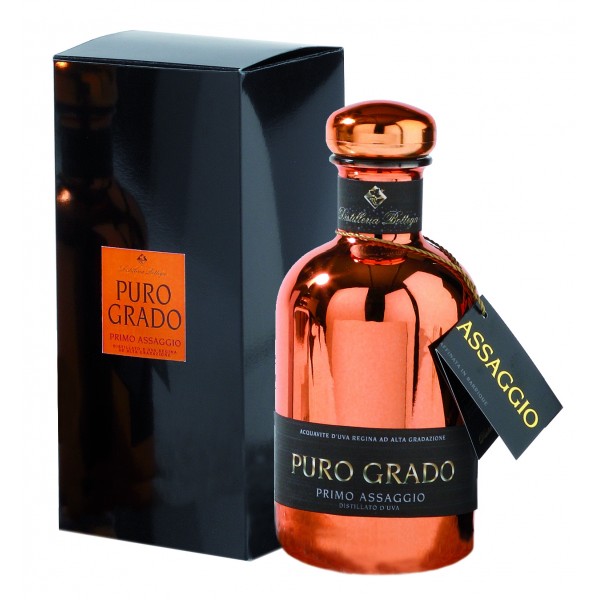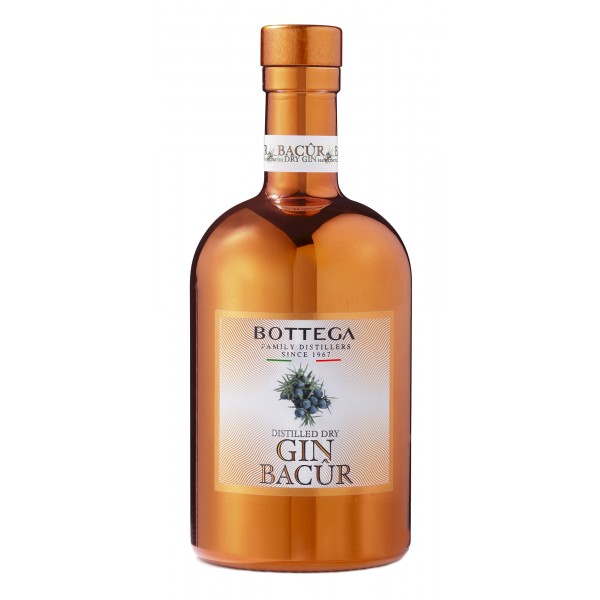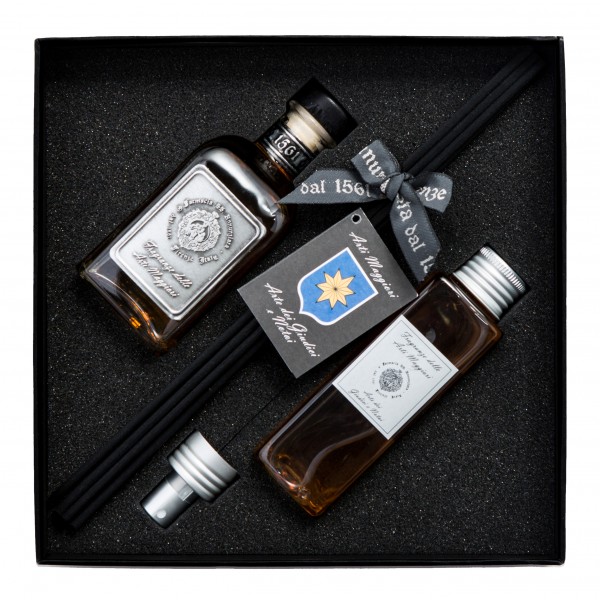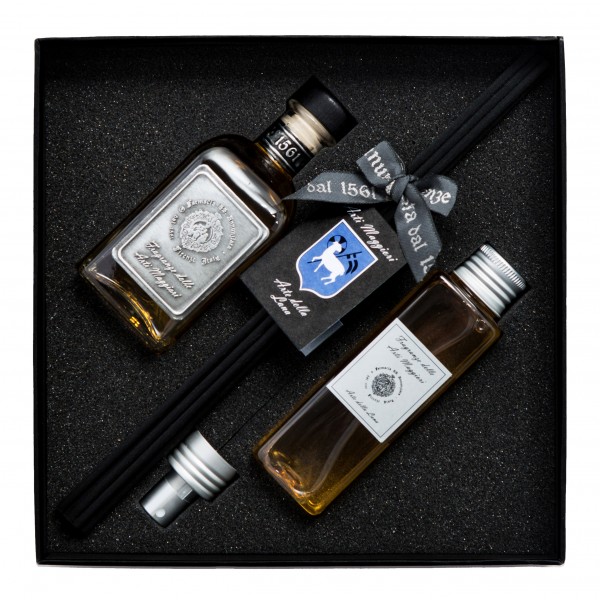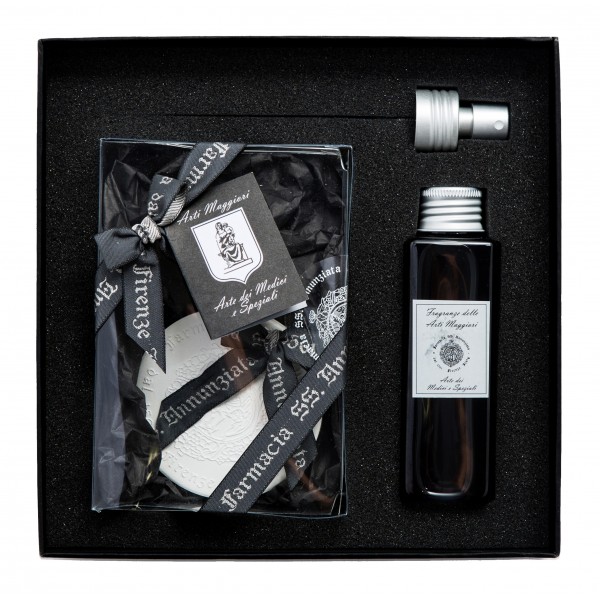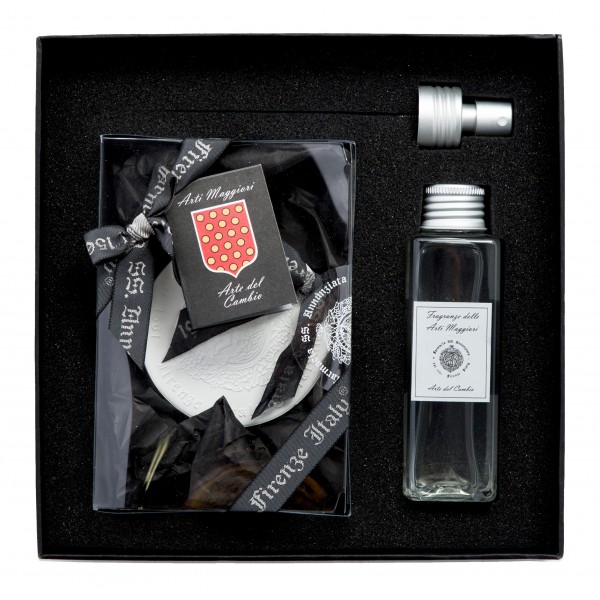No products
Refine
Extra
Gift Ideas
-
Bottega - Diamond - Pinot Nero Spumante Brut D.O.C. - Diamond Edition -...
Bottega Diamond is a Brut sparkling wine obtained using the Long Charmat method through white-wine vinification of Pinot Nero grapes. The bottle is adorned with a series of small brilliants spelling out the name Bottega, giving the final touch to this product and highlighting its value, elegance and refinement.
21,40 € -
Bottega - Private Reserve Grappa Barricata - Private Reserve - Liqueurs and...
The Barricata Private Reserve originates from a reserve of Amarone grappa. The result of the distillation of grape skins deriving from the production of the highly prized Amarone della Valpolicella wine, is the result of the passion and skill of master distillers, capable of transforming a solid raw material into a transparent and crystalline liquid, with...
34,90 € -
Bottega - First Taste Pure Degree of Grape Distilled Bottega - Liqueurs and...
Grape brandy is obtained by distilling the fermented must in the presence of the skins, for which both the solid and the liquid part of the grapes are used. Powerful, intense and elegant, the First Taste Pure Degree Grape Distilled Bottega is produced from healthy and rich bunches of must, a precious raw material with a great aromatic charge.
31,90 € -
Bottega - Maestri - Aged Grappa Prosecco Bottega - Liqueurs and Spirits
The Masters Aged Grappa Bottega, dedicated to the Masters of Art and Culture, is produced with a technique that combines tradition and innovation; the aging in wood gives it the characteristic amber color and enriches the bouquet with unique and persuasive notes.
49,80 € -
Bottega - Bacur Gin Bottega - Distilled Dry Gin - Medium - Liqueurs and Spirits
Gin is a strong and aromatic distillate. Its origin is linked to a Dutch professor of medicine and physics, Franciscus De La Boe, who deepened and studied the properties of juniper essential oils, obtained by redistilling an infusion of these macerated berries in pure alcohol. It was then used by English soldiers returning from the Netherlands and in...
25,10 € -
Bottega - Bacur Gin Bottega - Distilled Dry Gin - Large - Liqueurs and Spirits
Gin is a strong and aromatic distillate. Its origin is linked to a Dutch professor of medicine and physics, Franciscus De La Boe, who deepened and studied the properties of juniper essential oils, obtained by redistilling an infusion of these macerated berries in pure alcohol. It was then used by English soldiers returning from the Netherlands and in...
32,40 € -
Farmacia SS. Annunziata 1561 - Arte dei Giudici e Notai - Kit + Recharge -...
Arte dei Giudici e Notai: (1212) Corporation which gave a very strong contribution to all the Guilds in view of the continuous need for Judges and Notaries in dealing with the considerable paperwork involved. Among the Notaries, a “Proconsul” was appointed, the highest authority recognized by all the Guilds. Kit + Recharge.
52,00 € -
Farmacia SS. Annunziata 1561 - Arte dei Medici e Speziali - Kit + Recharge -...
Arte dei Medici e Speziali: (1349) The old doctors (medici) practised medicine and surgery, prepared the medicines to administer to patients and were also profound philosophy scholars. The pharmacists (speziali) on the other hand, obtained and sold the herbs, drugs and spices needed to prepare medicines. They also traded in perfumes and essences, as well...
52,00 € -
Farmacia SS. Annunziata 1561 - Arte dei Mercatanti - Kit + Recharge - Room...
Arte dei Mercatanti: (1182) The Florentine entrepreneurs who belonged to this ancient corporation imported rough cloth from abroad, refining and finishing it and then selling it. Together they formed powerful trading companies, opening up various branches in many European cities and in North Africa, making huge profits from their trade and becoming known...
52,00 € -
Farmacia SS. Annunziata 1561 - Arte dei Vaiai e Pellicciai - Kit + Recharge -...
Arte dei Vaiai e Pellicciai: (1266) The vair workers specialized in working squirrel skins and the furriers all other hides. From the raw hides, the vair workers and furriers obtained refined garments by tanning and subsequent production processes. The transformation from spiny and solitary bush to refined and sensual flower; an explosion of rosy...
52,00 € -
Farmacia SS. Annunziata 1561 - Arte del Cambio - Kit + Recharge - Room...
Arte del Cambio: (1202) The Florentines excelled in this activity, which consisted in exchanging the numerous foreign currencies with that of Florence (gold florin), in granting loans and in sending currency from one country to another by means of “letters of exchange”, a method which became widespread to safely transfer large amounts of money. Kit +...
52,00 € -
Farmacia SS. Annunziata 1561 - Arte della Lana - Kit + Recharge - Room...
Arte della Lana: (1317) This Guild was perhaps the major source of wealth and power of Florence: it did in fact help spread the city’s products worldwide. It saw to all the various processes from the raw baled wool through to the final cloth. A “wool stamp” was stitched onto each Florentine product, to protect it against counterfeiting. Kit + Recharge.
52,00 € -
Farmacia SS. Annunziata 1561 - Arte della Seta - Kit + Recharge - Room...
Arte della Seta: (1248) Originally called “Arte di Por Santa Maria” due to its vicinity to the namesake city gate. Thanks to the increase in the production of fabrics and great expansion of trade, the association took the name of Arte della Seta. Its members worked silk drapes woven with gold, silver and every other colour. Freshness of a lightweight and...
52,00 € -
Farmacia SS. Annunziata 1561 - Arte dei Giudici e Notai - Ceramic + Recharge...
Arte dei Giudici e Notai: (1212) Corporation which gave a very strong contribution to all the Guilds in view of the continuous need for Judges and Notaries in dealing with the considerable paperwork involved. Among the Notaries, a “Proconsul” was appointed, the highest authority recognized by all the Guilds. Ceramic Tablet + Recharge.
36,00 € -
Farmacia SS. Annunziata 1561 - Arte dei Medici e Speziali - Ceramic +...
Arte dei Medici e Speziali: (1349) The old doctors (medici) practised medicine and surgery, prepared the medicines to administer to patients and were also profound philosophy scholars. The pharmacists (speziali) on the other hand, obtained and sold the herbs, drugs and spices needed to prepare medicines. They also traded in perfumes and essences, as...
36,00 € -
Farmacia SS. Annunziata 1561 - Arte dei Mercatanti - Ceramic + Recharge -...
Arte dei Mercatanti: (1182) The Florentine entrepreneurs who belonged to this ancient corporation imported rough cloth from abroad, refining and finishing it and then selling it. Together they formed powerful trading companies, opening up various branches in many European cities and in North Africa, making huge profits from trade and known on major...
36,00 € -
Farmacia SS. Annunziata 1561 - Arte dei Vaiai e Pellicciai - Ceramic +...
Arte dei Vaiai e Pellicciai: (1266) The vair workers specialized in working squirrel skins and the furriers all other hides. From the raw hides, the vair workers and furriers obtained refined garments by tanning and subsequent production processes. The transformation from spiny and solitary bush to refined and sensual flower; an explosion of rosy...
36,00 € -
Farmacia SS. Annunziata 1561 - Arte del Cambio - Tablet + Recharge - Room...
Arte del Cambio: (1202) The Florentines excelled in this activity, which consisted in exchanging the numerous foreign currencies with that of Florence (gold florin), in granting loans and in sending currency from one country to another by means of “letters of exchange”, a method which became widespread to safely transfer large amounts of money. Ceramic...
36,00 € -
Farmacia SS. Annunziata 1561 - Arte della Lana - Ceramic + Recharge - Room...
Arte della Lana: (1317) This Guild was perhaps the major source of wealth and power of Florence: it did in fact help spread the city’s products worldwide. It saw to all the various processes from the raw baled wool through to the final cloth. A “wool stamp” was stitched onto each Florentine product, to protect it against counterfeiting. Ceramic Tablet +...
36,00 € -
Farmacia SS. Annunziata 1561 - Arte della Seta - Ceramic + Recharge - Room...
Arte della Seta: (1248) Originally called “Arte di Por Santa Maria” due to its vicinity to the namesake city gate. Thanks to the increase in the production of fabrics and great expansion of trade, the association took the name of Arte della Seta. Its members worked silk drapes woven with gold, silver and every other colour. Freshness of a lightweight and...
36,00 € -
Farmacia SS. Annunziata 1561 - Arte dei Giudici e Notai - Pot Pourri +...
Arte dei Giudici e Notai: (1212) Corporation which gave a very strong contribution to all the Guilds in view of the continuous need for Judges and Notaries in dealing with the considerable paperwork involved. Among the Notaries, a “Proconsul” was appointed, the highest authority recognized by all the Guilds. Pot Pourri + Recharge.
36,00 €






